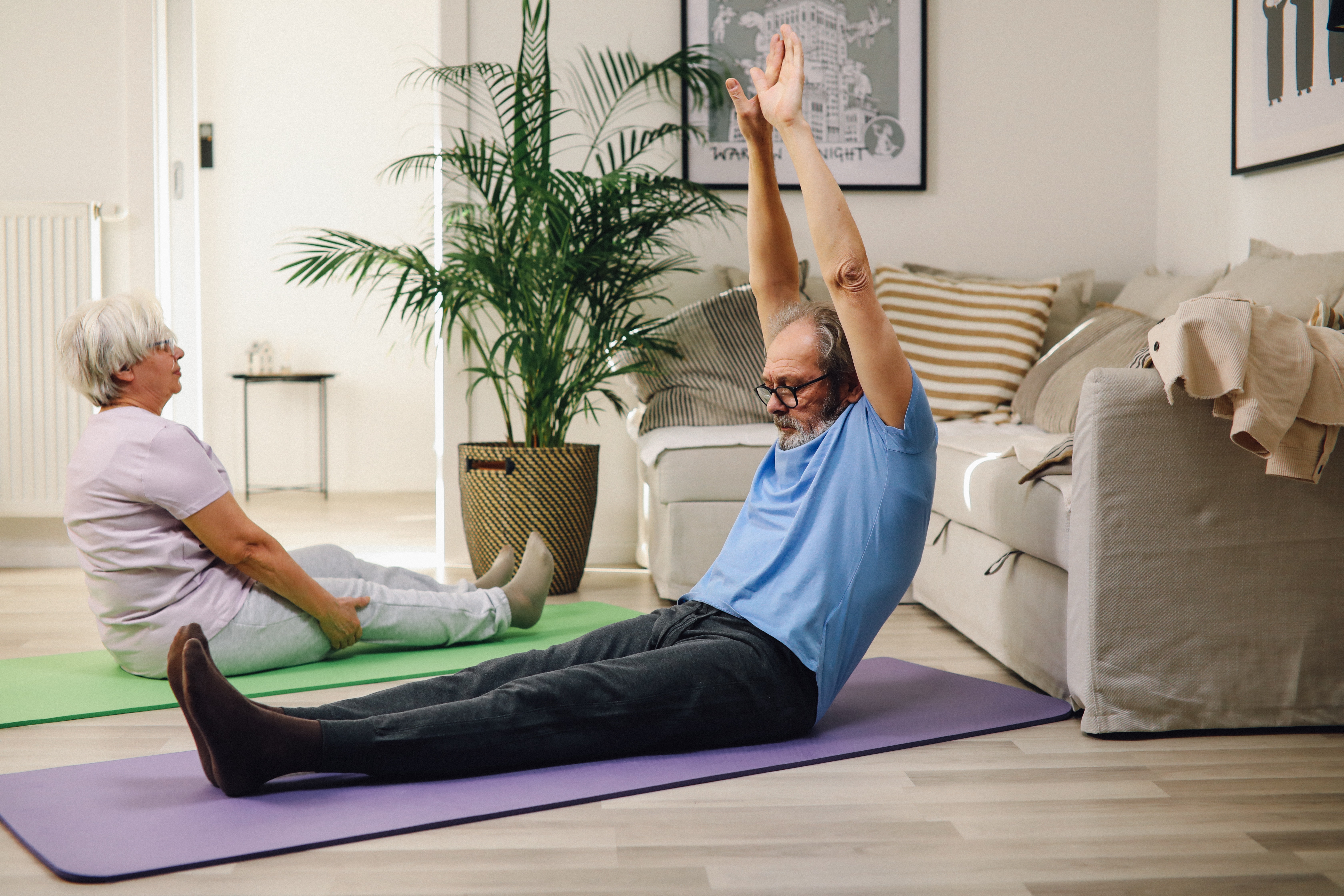Chilly weather may make everyone want to hibernate until spring, but winter can be especially hard on older adults. Older bodies are less efficient at producing heat, and cold weather can exacerbate joint issues like arthritis. Slippery ice, snow drifts, and a reduced sense of touch from gloves or mittens can also make avoiding falls a challenge. The Mayo Clinic reports that older adults are at higher risk of falls with serious injury due to less bone density and diminished healing ability compared to younger people.
With falls being much more perilous for older adults, it’s vital to take steps to prevent falls. Working on strength and flexibility is a great way to fight off the chill for older adults. Regular stretching can help wake up stiff muscles, heat up the body, and increase reaction time. Here are a few easy, low-impact exercises to keep older adults steady in cold weather.
Note: Before going into full stretches, always make sure to warm up. Shoulder rolls, arm circles, hip circles, and marching in place for a few minutes before starting will signal the body to wake up.
1. Pec Stretch
This stretch helps release tension in the chest and improves posture. Standing in front of an open doorway, place your hands on each side of the doorframe just below shoulder height. When comfortable, take one step through the doorway, not releasing your hands from the doorframe. You should feel the stretch bring your shoulders back and pull across your chest muscles. Hold for a few deep breaths, and then step back. Repeat a few times with a few moments of shoulder rolls in-between each stretch.
Variation: If you can’t comfortably span the whole doorway, you can still achieve this stretch one arm at a time. Just place your right hand on the right doorframe, and keep your left arm at your side. Take a step through the door to stretch the right side of the chest. Then repeat the exercise on the left side.
2. Seated Bends
This stretch works your core and flexibility from a seated position with your feet flat on the floor. Start by raising your arms straight up and reaching as if to grab something off a high shelf. Hold this reach for a breath in, release on a breath out, and then reach again on the next breath in. Fully release and roll your shoulders.
Then bring your arms over your head and gently bend to the right, keeping your head and chest facing forward, and breathing along the way. Return upright, then repeat, this time bending to the left. Repeat, taking time to release in between each stretch, and do some shoulder rolls.
Lastly, place your hands on the top of your thighs, and slowly bend forward, letting your hands brace down your legs for support. Only bend forward to where you are comfortable. You should feel the stretch in your lower back. After holding for a few breaths, slowly rise from the bend.
3. Squats to Chair/Sit and Stand
This exercise is also used in the VSTBalance fall-risk diagnostics, so it should be familiar to adults using VSTBalance at their primary care or physical therapy office, or adult living community. Routinely practicing a set of sit and stands/chair squats is a great way to engage core muscles, increase balance, and engage the whole lower body at once. Follow the video below for a step-by-step on this exercise.
4. Seated Leg Lifts
Still using your seat from the previous exercise, this next move will engage your abdominal muscles and the tops of your legs. Sit with your knees bent and feet flat on the floor, rest your arms to your sides, and keep your back straight. Grip the bottom of your chair and slide your right foot forward so your right leg is extended. Then engage your core and the muscles on top of the thigh to lift your right leg up parallel to the floor with your knee straight. Make sure to breathe steadily throughout this exercise (and all core workouts) to maintain an even blood pressure. Take a breath to rest, and then repeat using the left leg. Repeat this stretch a few times to work out the core.
5. Ankle Pumps
This exercise can be done practically anywhere—while sitting at the kitchen table during a meal, on the couch watching some TV, waiting for an appointment, or while in bed. Ankle pumps keep the ankle joint mobile, and prevents swelling and stiffness when you aren’t on the move. You can perform this exercise with both feet at once, or one foot at a time—whatever is more comfortable. Simply point your toes away from your body and then flex your feet to pull the toes toward you. Repeat in a fluid motion for 5-10 repetitions and remember to repeat the whole exercise throughout the time you are seated. This keeps your ankles warmed up and ready to correct your balance, should you feel unsteady when you stand.
These exercises will help build strength and flexibility, as well as warming up muscles before going out into the cold. Staying active is extremely beneficial to preventing falls, with the the added benefits of better sleep, more confidence, and increased energy. So keep moving, especially when it’s cold!


